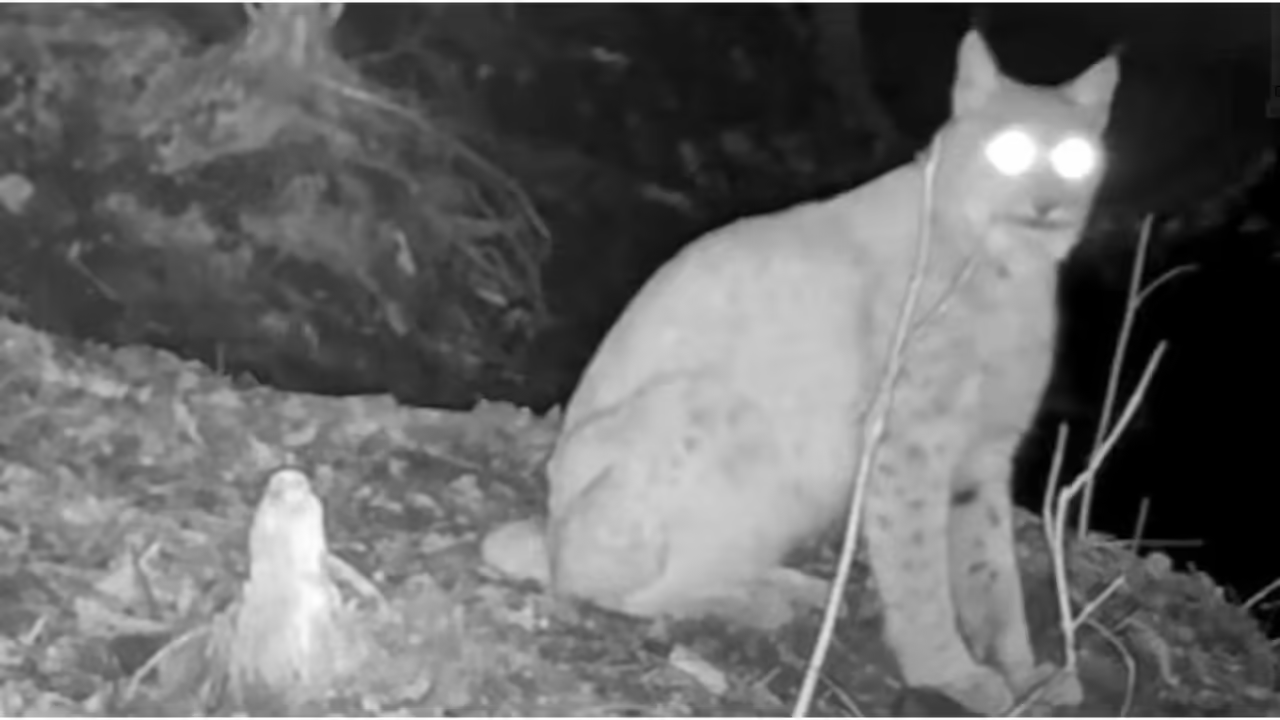
The nuclear disaster at Chernobyl on April 26, 1986, was one of the most catastrophic events in the history of nuclear energy. Occurring at the Chernobyl nuclear power plant near the city of Pripyat in Ukraine, then part of the Soviet Union, the explosion of one of the reactors released a massive amount of radiation, causing devastating immediate and long-term consequences.
Contextualization of the Nuclear Disaster
The Chernobyl accident resulted from a combination of human errors and flaws in the reactor’s design. During a safety test, reactor number 4 experienced a series of explosions, releasing a huge amount of radioactive material into the environment. The radiation affected not only the plant workers but also the surrounding population, spreading across Europe.
Immediate consequences included the evacuation of thousands, the establishment of an exclusion zone around the plant, and contamination of vast areas with dangerous radiation levels. Additionally, the environmental impact and social repercussions were significantly felt.
Long-Term Effects on Fauna and Flora:
The radiation released in Chernobyl had profound consequences on the region’s fauna and flora, leading to long-term changes in affected ecosystems. While initially, there was a drastic decline in wildlife due to high radiation levels, over time, some surprising phenomena became evident.
In areas abandoned by humans, nature demonstrated its ability to adapt to adverse conditions. Populations of animals such as deer, wild boars, and wolves were observed thriving in the absence of human pressure, despite the associated radiation risks. However, these animals also showed signs of genetic damage and altered reproduction.
Regarding flora, mutations in plants and trees were observed in the affected areas. Some species developed resistance to radiation, while others experienced changes in growth and reproduction. These long-term effects on Chernobyl’s flora and fauna offer valuable lessons about nature’s ability to adapt to extreme conditions, along with significant risks associated with nuclear radiation.
Cancer Resistance in Chernobyl Animals
Recent scientific discoveries have unveiled interesting phenomena related to cancer resistance in Chernobyl animals, providing a unique perspective on wildlife’s ability to adapt to radiation-contaminated environments. Some of the noteworthy findings include:
Lower Incidence of Cancer in Certain Mammals: Research indicates that in highly radiation-contaminated areas in Chernobyl, a lower incidence of malignant tumors has been observed in certain mammals, such as mice and some larger mammals. This has led to speculation about the possibility that some animals have developed resistance mechanisms or genetic adaptations that reduce the likelihood of developing cancer.
Genetic Adaptations in Bird Populations: Some bird populations in Chernobyl have been observed to have genetic changes that could be related to radiation resistance and, consequently, a lower incidence of diseases, including cancer. These genetic changes might be associated with the natural selection of genetically more resistant individuals.
DNA Repair Mechanisms: It has been suggested that certain animals in Chernobyl have developed more efficient DNA repair mechanisms, enabling them to cope with radiation damage more effectively. These mechanisms could help prevent the formation of cancer cells.
Species Thriving in Contaminated Environments: Some species, such as insects and fungi, have proven to be more resistant and capable of thriving in radiation-contaminated environments. These organisms may have unique adaptations that allow them to resist and take advantage of Chernobyl’s adverse conditions.
It is essential to note that, despite these findings, radiation remains harmful to most forms of life and can have long-term negative effects on organisms’ health. Additionally, cancer resistance in Chernobyl animals does not imply that radiation has no significant impacts on the health and genetics of affected populations. Studies continue to better understand these phenomena and their implications for both wildlife and human health.
Field Studies and Key Findings
Field studies in the Chernobyl Exclusion Zone have provided valuable information on the effects of radiation on fauna and flora, as well as potential wildlife adaptations to adverse conditions. Here are some key findings and observations from studies conducted in the Exclusion Zone:
Biodiversity Changes: Studies have demonstrated significant changes in biodiversity within the Exclusion Zone. While some species have decreased due to radiation, others have thrived in the absence of human intervention. Healthier populations of certain animals, such as deer, wild boars, and wolves, have been recorded.
Fauna Behavior Changes: Scientists have observed changes in animal behavior in the Exclusion Zone. Some species have developed nocturnal activity patterns to avoid interaction with humans during the day, possibly in response to reduced human presence.
Genetic Adaptations: Genetic adaptations have been identified in certain animal populations, suggesting natural selection for radiation resistance. These genetic changes could be related to DNA repair capability and the reduced incidence of radiation-associated diseases.
Wildlife Health Effects: Post-mortem studies on animals have been conducted to assess the effects of radiation on their health. Organ and tissue damage, as well as genetic mutations, have been observed. However, some animals seem to develop compensation mechanisms to minimize negative effects.
Studies on Aquatic Biota: Water bodies within the Exclusion Zone have also been subjects of research. Certain aquatic organisms, including fish and amphibians, show varied responses to radiation, including the accumulation of radioactive isotopes in their tissues.
Impact on Flora: In addition to fauna, studies have focused on plants and trees present in the Exclusion Zone. Mutations in flora and the emergence of radiation-resistant species colonizing abandoned areas have been observed.
Cancer Resistance Mechanisms
The cancer resistance mechanisms observed in Chernobyl animals may be related to genetic adaptations that enable them to better withstand the adverse conditions of radiation. Although research in this field is ongoing and complex, several possible genetic mechanisms have been suggested:
Enhanced DNA Repair: Animals in the Exclusion Zone may have developed more efficient DNA repair systems. Radiation can cause damage to cell genetic material, and individuals with improved repair mechanisms may have a greater ability to correct this damage and prevent the formation of cancer cells.
Mutation Suppression: Some animal populations may have undergone natural selection favoring genes that suppress or reduce the frequency of radiation-induced genetic mutations. This would help maintain genetic stability and prevent the emergence of abnormal cells that could lead to cancer.
Antioxidant Responses: Radiation can generate reactive oxygen species causing cell damage. It has been suggested that certain animals in Chernobyl might have developed more effective antioxidant systems to neutralize these free radicals and protect cells from additional damage that could lead to cancer.
Natural Selection of Resilient Individuals: Over time, individuals with a genetic predisposition to resist the negative effects of radiation may have been favored by natural selection. This could have led to an increase in populations with specific genetic characteristics that confer cancer resistance.
Impact on Understanding Radiation and Cancer
The study of radiation effects on Chernobyl fauna has made valuable contributions to the field of radiobiology, offering unique insights with potential applications in medical research. Some of these contributions and applications include:
Understanding Radiation Adaptation: Research in Chernobyl has shed light on radiation adaptation mechanisms in wildlife. Understanding how certain species have evolved to resist the harmful effects of radiation can provide insights into evolutionary processes and molecular mechanisms behind cellular responses to radiation.
Development of Radioprotective Therapies: The observed genetic mechanisms in Chernobyl animals could inspire the development of radioprotective therapies in humans. Identifying specific genes or proteins that confer radiation resistance could open new avenues for drug research aimed at protecting human cells from the harmful effects of radiation.
Improvement of Radiotherapy Strategies: Understanding how some animals have developed radiation resistance may influence radiotherapy strategies in medicine. Approaches that mimic the DNA repair mechanisms observed in Chernobyl animals could be explored to enhance the effectiveness of radiotherapy in human patients.
Establishment of Exposure Limits: Studies in Chernobyl can also contribute to the review and establishment of radiation exposure limits in occupational and medical settings. Understanding how wildlife responds to radiation can influence safety guidelines and policies related to human exposure.
Research on Genetic Cancer Resistance: Findings related to cancer resistance could have applications in medical research to better understand genetic mechanisms associated with cancer susceptibility. This could lead to the identification of new therapeutic targets and prevention strategies.
Highlighted Species in Research
In the research on radiation resistance in Chernobyl, several species have stood out for showing notable adaptations and resistance to the impact of radiation. These species have played a crucial role in understanding the effects of radiation on local fauna and evaluating organisms’ responses to extreme environmental conditions. Some of the prominent species include:
Wolf (Canis lupus): Chernobyl wolves have been the focus of numerous studies due to their ability to thrive in the Exclusion Zone. Despite exposure to significant radiation levels, wolf populations have demonstrated surprising adaptation, with a lower incidence of tumors and relatively successful reproduction.
Wild Boar (Sus scrofa): Wild boars in the Exclusion Zone have also shown remarkable resistance to radiation. Despite elevated radiation levels, wild boar populations have increased and exhibited relatively high reproduction rates, indicating genetic adaptations that could confer some immunity to the harmful effects of radiation.
Field Mouse (Apodemus spp.): Field mice have been subject to detailed studies due to their abundance and ability to colonize contaminated areas. A lower incidence of cancer has been observed in these populations, suggesting possible genetic adaptations that reduce susceptibility to the disease.
Birds (Various Species): Various bird species, such as swallows, sparrows, and house martins, have been studied in relation to radiation in Chernobyl. Changes in behavior and reproduction, as well as genetic adaptations, have been observed, influencing their resistance to the effects of radiation.
The importance of these species lies in their ability to survive and reproduce in highly radiation-contaminated environments. These animals serve as indicators of wildlife’s response to extreme conditions and provide valuable insights into genetic adaptation mechanisms. Furthermore, their presence and behavior in the Exclusion Zone also offer information about the resilience of ecosystems in the face of catastrophic events.
The study of these standout species has significantly contributed to our understanding of radiobiology and has opened new perspectives on wildlife’s capacity to adapt to radiation-contaminated environments.







